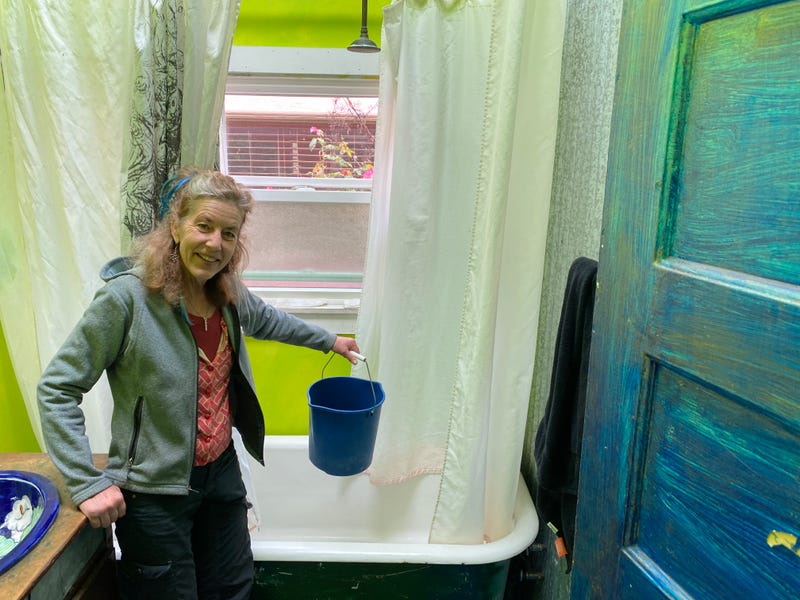All this week, KCBS Radio is taking a look at California’s emerging drought crisis. Part One looked at how the dry conditions are affecting one region of the Bay Area. Part Two examined the impact on the state’s agriculture industry and the people who rely on it.
In Part Three, Megan Goldsby reports on how people are responding to new warnings of disaster on the heels of a pandemic.
The last time California was in a severe drought Bay Area residents rose to the challenge, showering with buckets at our feet, utilizing runoff and replacing lawns with drought-tolerant plants. But just a few years after a major drought passed, are people ready to go through all over again?
“It’s one thing after another,” said Eduardo from San Mateo, referring to the barrage of disasters, from wildfires to a pandemic and now a drought.
Could this mean that the escalating calls of alarm about the drought are falling on deaf ears?
“Certainly I think people in the Bay Area may be experiencing disaster fatigue,” said Dr. Beth Phoenix, a clinical professor at the UCSF School of Nursing.
And she says that could make people throw up their hands in the face of more mandates or precautions, because disaster fatigue can lead to symptoms like anxiety, depression, exhaustion and even “an unwillingness or inability to do things that would get them out of future dangers.”
Elizabeth Dougherty is director of Whole H2O and a local hero in water conservation. She says that reframing your individual relationship to the environment can help offset burnout.
“I don’t do these things really for the drought, I do it for the ecosystem. I’m motivated to love my ecosystem,” she said.
So much so that her dog is named after the Mokelumne River, which supplies water to Oakland.
Dougherty uses just 17 gallons of water each day thanks to strategies like a home grey water system, several large tanks to capture rainwater and yes, a bucket in the shower.

She says making a simple emotional connection with something in your ecosystem can help inspire people to want to conserve, like the bird outside your window or the water that comes into your home.
“There is no river named Hetch Hetchy, it’s actually a reservoir. So how are you going to develop an emotional relationship with a reservoir?”
The solution, she says, is to call it by its name, the Tuolumne. Fostering that connection may help you focus on saving it.
Dr. Phoenix seconds that suggestion, as that focus can also help strengthen your own resolve and resilience.
“It also helps remind people that they have inner resources that they can draw on.”
That is something that many people may have learned already through the pandemic.
Alex who live on the Peninsula says its reinforced the importance of community.
“I don’t think people want to hear it but COVID is not like – you know, the world always has issues. It’s part of us as human beings or part of a larger community to do our share,” he said. “So if they ask to do some restrictions because of the drought, I’m down.”

